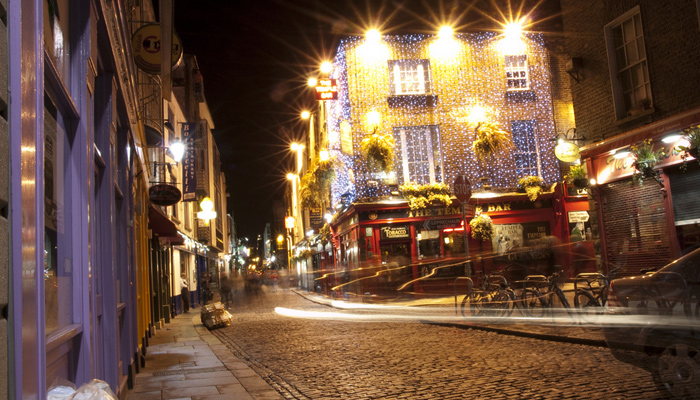Dublin

At first glance, it’s kind of difficult to see why. Dublin isn’t as sexy or as sultry as other European capitals, the architecture is a bit of a jumble and it seems everyone has something to complain about. Dubs can be brutally unsentimental about their city, but their warts-and-all attachment is born out of a genuine love of a place that oozes personality, a city whose soul and sociability makes it the most charismatic of capitals.
Dublin is the capital and most populous city of Ireland. The English name for the city is derived from the Irish name Dubh Linn, meaning "black pool". Dublin is situated near the midpoint of Ireland's east coast, at the mouth of the River Liffey, and at the centre of the Dublin Region.
Originally founded as a Viking settlement, it evolved into the Kingdom of Dublin and became the island's principal city following the Norman invasion. The city expanded rapidly from the 17th century, and was briefly the second largest city within the British Empire and the fifth largest in Europe. However, Dublin entered a period of stagnation following the Act of Union of 1800, but remained the economic centre for most of the island. Following the partition of Ireland in 1922, the new parliament, the Oireachtas, was located in Leinster House. Dublin became the capital of the Irish Free State, and later the Republic of Ireland.
Similar to the other cities of Cork, Limerick, Galway, and Waterford, Dublin is administered separately from its respective county with its own city council. The city is listed by the GaWC as a global city, with a ranking of Alpha-, placing Dublin among the top 30 cities in the world. It is a historical and contemporary cultural centre for the country, as well as a modern centre of education, the arts, administration, economy, and industry.
Similar to much of northwest Europe, Dublin experiences a maritime climate with mild winters, cool summers, and a lack of temperature extremes. The average maximum January temperature is 8.3 °C (47 °F), while the average maximum July temperature is 19.6 °C (67 °F). On average, the sunniest months are May and June, while the wettest month is December with 73 mm (3 in) of rain, and the driest month is July with 43 mm (2 in). Rainfall is evenly distributed throughout the year.
Dublin records the least amount of rainfall in Ireland, with the average annual precipitation in the city centre being 695 mm (27 in). The main precipitation in winter is rain; however snow showers do occur between November and March. Hail is more common than snow. The city experiences long summer days and short winter days. Strong Atlantic winds are most common in autumn. These winds can affect Dublin, but due to its easterly location it is least affected compared to other parts of the country.